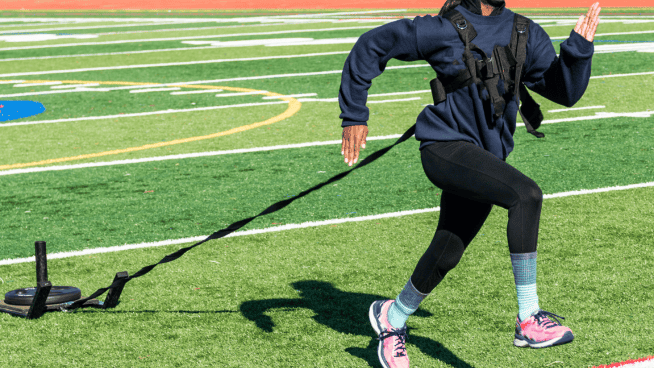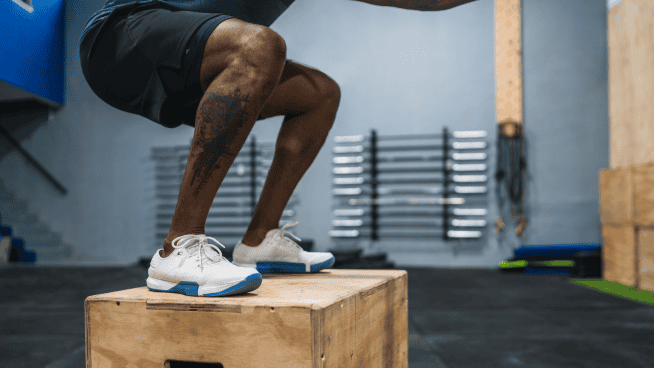The Perfect Plank for Maximum Shoulder Stability and Strength
Having trained over 3,000 people in my fitness career, I’ve seen a lot of patterns in the mistakes people make when attempting to learn common exercises.
One such exercise? The Plank. Fitness professionals love Planks! And why not? Planks are a great exercise for improving core stability, are useful in rehab or prehab settings, and can easily be modified for any individual. Traditionally, the Plank has been taught with shoulder retraction. However, I believe we’re leaving a lot of potential improvement on the table by teaching the exercise strictly in this fashion. By retraction, I’m referring to the shoulder blades being “pinched” together back toward the spine as shown here:
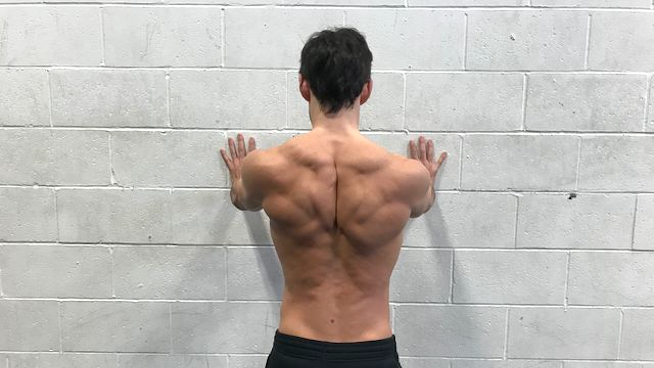
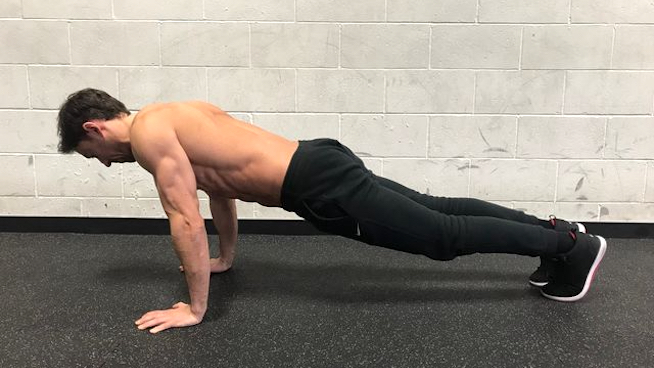
At my facility, we’ve found that people with shoulder issues don’t like this position. So instead of forcing them into it, we started to put their Planks in protraction. Protraction is the opposite of retraction and refers to the shoulders being drawn forward away from the spine. Like shown here:
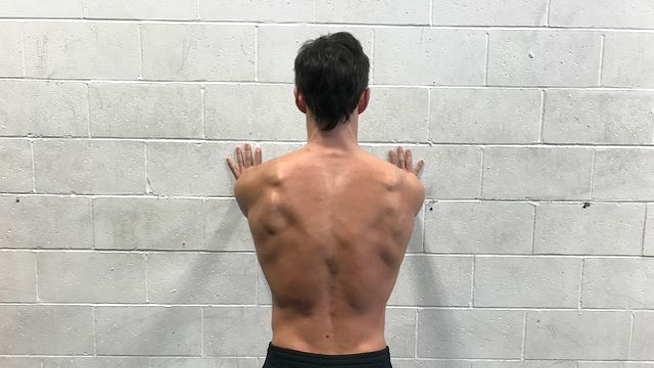
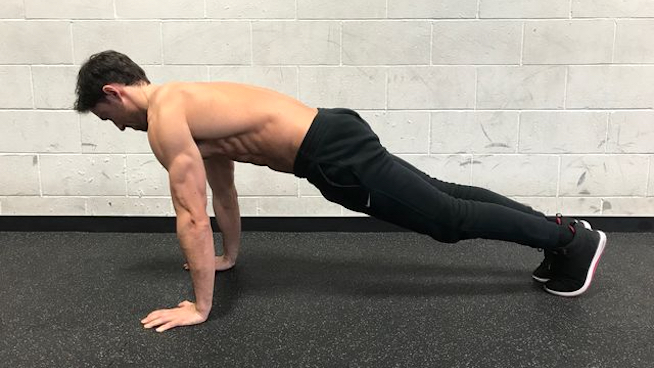
We found this position instantly made the Plank pain-free for these clients and also gave them the ability to activate their serratus anterior. The serratus anterior is a muscle you may start hearing more about, simply because it’s so weak in the average modern human. And because it’s so inactive, it doesn’t stabilize the shoulder blade like it should. Thus, half the population is walking around with insufficient shoulder stability! Performance coach Eric Cressey has even gone as far as saying the “serratus solves everything” when it comes to poor shoulder stability, which is a pretty powerful statement.
This diagram shows the location of the serratus anterior:
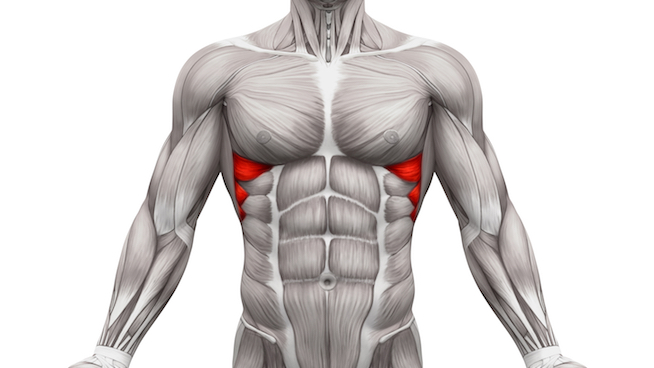
The serratus is important to scapular stability as it is an upward rotator of the scapula. Weak upward rotators lead to external shoulder impingement. Unfortunately, many attribute shoulder impingement with something being wrong with the rotator cuff; that’s treating the symptom, not the cause!
Everything in the body is connected. Having balanced muscles around the shoulder blades is very important. Someone may have have a shoulder issue in the glenohumeral joint because it is being put under too much stress and the body is creating a muscular imbalance where the rotator cuff is overworking or compensating for a range-of-motion or stability issue. The joint starts to get irritated and the cycle continues. You could even have them do external rotation with a band until they are blue in the face, but if the shoulder blades aren’t sitting on the ribcage properly, you are just addressing the symptom and not addressing the issue.
I’ve found putting Planks in protraction offers a number of benefits over the standard retracted position.
For one, you make the exercise more challenging, as you are lifting your body away from the floor against gravity and are working under more tension. You know time under tension is a huge key for greater muscle development!
You are also activating a generally weak muscle group which plays an important role in shoulder stability. Most people have a hard time activating the serratus anterior. This exercise will increase their mind-body connection with the muscle and create greater shoulder stability. The serratus will posterior tilt the scapula (pulling the shoulder blade flat onto the rib cage), reducing “winging of the scapula” and reducing stress in the front of the shoulder capsule.
Attempting to activate a muscle that the average person doesn’t have a great mind-body connection with makes the central nervous system (CNS) work harder. When the CNS works harder, you burn more glucose (sugar), and the CNS burns more glucose than anything else in the body. So this Plank will help you burn more calories throughout your workout!
Putting Planks in protraction also translates to performance in terms of creating maximum strength with the arms fully extended. Think of a football player on the line of scrimmage with his hands on his opponent and his arms locked out.
If you look at gymnasts (who are pound-for-pound the strongest people in the world), they’re trained from an early age to protract all Plank movements. This is because if they want to progress to more advanced planche positions, they must have mastery over protraction and depression of the scapula (shoulder blades) in order to be successful. You can’t hold your body off the ground using only your arms without shoulder protraction.
How to Execute the Plank in Protraction
Now that you know the benefits of this rather simple tweak, here’s how to put it in action.
- Whether you’re in a High Plank or a Forearm Plank, push your hands or elbows into the floor to move your chest further from the ground.
- If you are concerned about maintaining a neutral spine (a straight line through the shoulder, hip, knee, and ankle joint), bring your chest up while maintaining the strong push through the ground with your hands or elbows. If you find you are losing your hip position (your hips are sagging, for example), squeeze your butt and keep your feet together while squeezing your legs together and activating your glutes.
- As you develop the strength to hold the Plank for longer periods, have someone put their hand on your back between the shoulder blades and see how much you can push into their hand. You’ll be pleased to see how much more distance you might have available for this movement and how much more it challenges the core.
- As with everything, consistency is the key. Constant application of this perfect plank technique will help maximize strength and stability in your shoulders.
Now get after it!
Josh Saunders, BS, CSCS BEFIT
Photo Credit: decade3d/iStock
READ MORE:
RECOMMENDED FOR YOU
MOST POPULAR
The Perfect Plank for Maximum Shoulder Stability and Strength
Having trained over 3,000 people in my fitness career, I’ve seen a lot of patterns in the mistakes people make when attempting to learn common exercises.
One such exercise? The Plank. Fitness professionals love Planks! And why not? Planks are a great exercise for improving core stability, are useful in rehab or prehab settings, and can easily be modified for any individual. Traditionally, the Plank has been taught with shoulder retraction. However, I believe we’re leaving a lot of potential improvement on the table by teaching the exercise strictly in this fashion. By retraction, I’m referring to the shoulder blades being “pinched” together back toward the spine as shown here:


At my facility, we’ve found that people with shoulder issues don’t like this position. So instead of forcing them into it, we started to put their Planks in protraction. Protraction is the opposite of retraction and refers to the shoulders being drawn forward away from the spine. Like shown here:


We found this position instantly made the Plank pain-free for these clients and also gave them the ability to activate their serratus anterior. The serratus anterior is a muscle you may start hearing more about, simply because it’s so weak in the average modern human. And because it’s so inactive, it doesn’t stabilize the shoulder blade like it should. Thus, half the population is walking around with insufficient shoulder stability! Performance coach Eric Cressey has even gone as far as saying the “serratus solves everything” when it comes to poor shoulder stability, which is a pretty powerful statement.
This diagram shows the location of the serratus anterior:

The serratus is important to scapular stability as it is an upward rotator of the scapula. Weak upward rotators lead to external shoulder impingement. Unfortunately, many attribute shoulder impingement with something being wrong with the rotator cuff; that’s treating the symptom, not the cause!
Everything in the body is connected. Having balanced muscles around the shoulder blades is very important. Someone may have have a shoulder issue in the glenohumeral joint because it is being put under too much stress and the body is creating a muscular imbalance where the rotator cuff is overworking or compensating for a range-of-motion or stability issue. The joint starts to get irritated and the cycle continues. You could even have them do external rotation with a band until they are blue in the face, but if the shoulder blades aren’t sitting on the ribcage properly, you are just addressing the symptom and not addressing the issue.
I’ve found putting Planks in protraction offers a number of benefits over the standard retracted position.
For one, you make the exercise more challenging, as you are lifting your body away from the floor against gravity and are working under more tension. You know time under tension is a huge key for greater muscle development!
You are also activating a generally weak muscle group which plays an important role in shoulder stability. Most people have a hard time activating the serratus anterior. This exercise will increase their mind-body connection with the muscle and create greater shoulder stability. The serratus will posterior tilt the scapula (pulling the shoulder blade flat onto the rib cage), reducing “winging of the scapula” and reducing stress in the front of the shoulder capsule.
Attempting to activate a muscle that the average person doesn’t have a great mind-body connection with makes the central nervous system (CNS) work harder. When the CNS works harder, you burn more glucose (sugar), and the CNS burns more glucose than anything else in the body. So this Plank will help you burn more calories throughout your workout!
Putting Planks in protraction also translates to performance in terms of creating maximum strength with the arms fully extended. Think of a football player on the line of scrimmage with his hands on his opponent and his arms locked out.
If you look at gymnasts (who are pound-for-pound the strongest people in the world), they’re trained from an early age to protract all Plank movements. This is because if they want to progress to more advanced planche positions, they must have mastery over protraction and depression of the scapula (shoulder blades) in order to be successful. You can’t hold your body off the ground using only your arms without shoulder protraction.
How to Execute the Plank in Protraction
Now that you know the benefits of this rather simple tweak, here’s how to put it in action.
- Whether you’re in a High Plank or a Forearm Plank, push your hands or elbows into the floor to move your chest further from the ground.
- If you are concerned about maintaining a neutral spine (a straight line through the shoulder, hip, knee, and ankle joint), bring your chest up while maintaining the strong push through the ground with your hands or elbows. If you find you are losing your hip position (your hips are sagging, for example), squeeze your butt and keep your feet together while squeezing your legs together and activating your glutes.
- As you develop the strength to hold the Plank for longer periods, have someone put their hand on your back between the shoulder blades and see how much you can push into their hand. You’ll be pleased to see how much more distance you might have available for this movement and how much more it challenges the core.
- As with everything, consistency is the key. Constant application of this perfect plank technique will help maximize strength and stability in your shoulders.
Now get after it!
Josh Saunders, BS, CSCS BEFIT
Photo Credit: decade3d/iStock
READ MORE:









